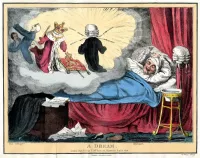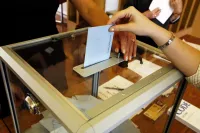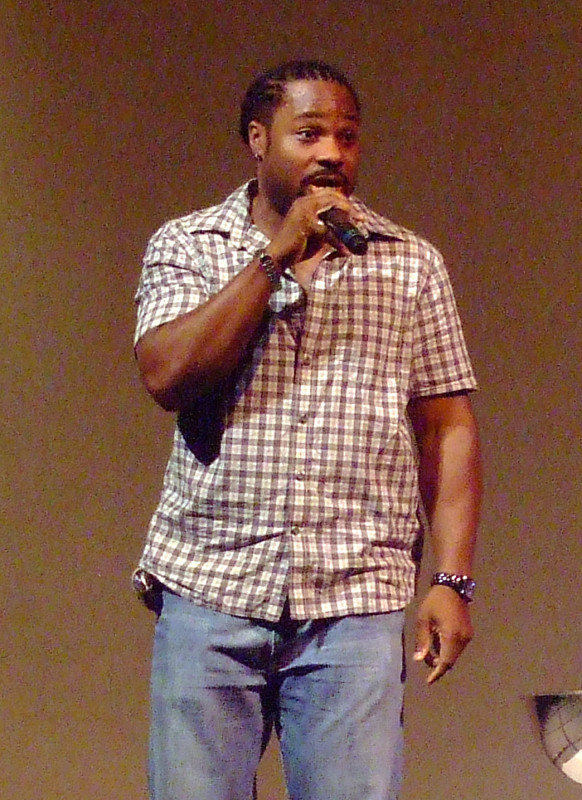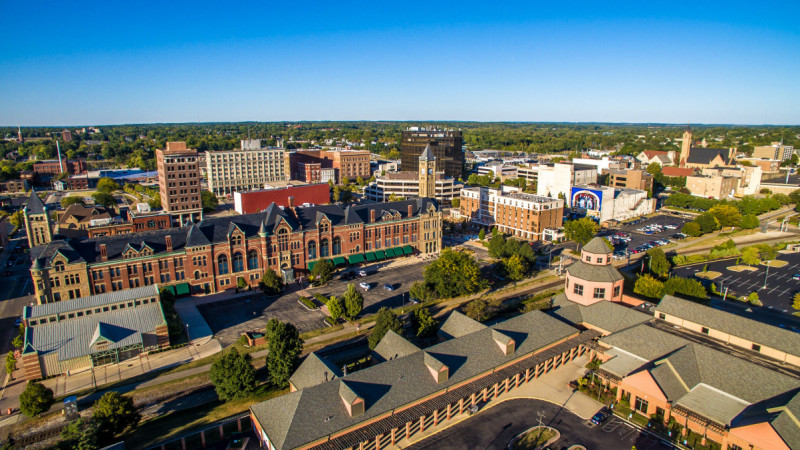Springfield, Ohio, the county seat of Clark County, is located in southwestern Ohio, positioned on the Mad River, Buck Creek, and Beaver Creek. It sits approximately 45 miles west of Columbus and 25 miles northeast of Dayton. According to the 2020 census, the city's population was 58,662, and the Springfield metropolitan area encompassed 136,001 residents.
January 15, 1902: Establishment of "Boys' and Girls' Agricultural Club"
On January 15, 1902, A.B. Graham established a "Boys' and Girls' Agricultural Club" in Springfield, with the first meeting held in the basement of the Clark County Courthouse.
1902: International Harvester absorbed Champion Farm Equipment
In 1902, the Warder, Bushnell & Glessner Company, manufacturers of the Champion Farm Equipment brand, was absorbed into International Harvester.
March 7, 1904: Richard Dixon Lynching
On March 7, 1904, a mob lynched Richard Dixon, a black man accused of killing a police officer, and rioted through the black area of town.
1904: Wright Brothers Patent
In 1904, Harry Aubrey Toulmin, Sr., patent attorney to the Wright Brothers, wrote the patent to their invention of the airplane at the Bushnell Building.
February 26, 1906: Second Riot in Springfield
On February 26, 1906, another riot occurred after an altercation, resulting in the burning of the Levee neighborhood and leaving nearly 100 people homeless.
1906: Wright Brothers Patent Granted
In 1906, the patent for the Wright Brothers' invention of the airplane, written in the Bushnell Building, was officially granted to the brothers.
1908: Westcott House Commissioned
In 1908, Westcott and his wife Orpha commissioned Frank Lloyd Wright to design their home.
1916: Start of the Automobile Industry
In 1916, the automobile industry began in Springfield, with 10 companies operating by 1926.
1921: Third Riot in Springfield
In 1921, Springfield experienced its third riot, during which The New York Times reported that 14 people were killed.
1926: End of the First Automobile Industry
By 1926, 10 automobile companies had operated in Springfield, including Westcott.
1957: Crowell-Collier Plant Sold
In 1957, Crowell-Collier Publishing closed its magazines and sold its Springfield printing plant.
1960: Population Peak
In 1960, Springfield's population peaked at more than 82,000.
1962: Opening of Springfield and Clark County Technical Education Program
In 1962, the Springfield and Clark County Technical Education Program opened, offering technical training.
February 18, 1966: Clark County Technical Institute Chartered
On February 18, 1966, Clark County Technical Institute was chartered as Ohio's first technical college.
1966: First Black Mayor of Ohio City
In 1966, Robert C. Henry was appointed as mayor, making him the first black mayor of an Ohio city.
1969: Demolition of Big Four Depot
In 1969, the New York Central's Big Four Depot was demolished.
April 30, 1971: Last Train from Springfield
On April 30, 1971, the last train departed from Springfield.
1971: Opening of Upper Valley Mall
In 1971, the Upper Valley Mall opened, and operated as the city's retail hub until 2021.
1983: Springfield Named "Dream City"
In 1983, Newsweek called Springfield one of America's "dream cities", but concluded that the American Dream was in decline.
1998: Warren Copeland Became Mayor
In 1998, Warren Copeland became the mayor of Springfield.
1999: Start of Median Income Decrease
Between 1999 and 2014, Springfield experienced a 27% decrease in median income, the largest of any metropolitan area in the country.
2000: Income and Poverty Levels
As of the 2000 census, the median household income in Springfield was $32,193, and 16.9% of the population was below the poverty line.
2000: Westcott House Purchased
In 2000, the Frank Lloyd Wright Building Conservancy purchased the Westcott House.
2000: Downtown Revitalization Efforts
Since 2000, city leaders have initiated revitalization efforts in downtown Springfield.
October 2005: Westcott House Restoration Completed
In October 2005, the extensive restoration of the Westcott House was completed, and the house opened for public tours.
2010: Population and Demographics
As of the 2010 census, Springfield had a population of 60,608, with a racial makeup of 75.2% White and 18.1% African American.
2011: Springfield Called "Unhappiest City"
In 2011, Gallup called Springfield the "unhappiest city" in the country.
2012: Start of Violent Crime Increase
From 2012 through 2014, Springfield experienced a 21% increase in violent crime.
2013: Founding of Global Impact STEM Academy
In 2013, the Global Impact STEM Academy, an early-college middle school and high school, was founded.
2014: End of Median Income Decrease
Between 1999 and 2014, Springfield experienced a 27% decrease in median income, the largest of any metropolitan area in the country.
2014: Welcome Springfield Initiative
In 2014, Springfield began the "Welcome Springfield" initiative to attract immigrants and improve the local economy.
2015: Peak in Violent Crime
In 2015, Springfield's violent crime reached a 14-year high.
2018: Economic Recovery Lag
As of 2018, Springfield had not experienced the economic recovery enjoyed by larger cities since the Great Recession.
2020: City Population in 2020
As of the 2020 census, Springfield's population was 58,662, while the Springfield metropolitan area had 136,001 residents.
2021: Closure of Upper Valley Mall
In 2021, the Upper Valley Mall, Springfield's retail hub since 1971, permanently closed.
August 2023: School Bus Accident Involving Haitian Driver
In August 2023, tensions rose when an improperly licensed Haitian driver caused a school bus accident, resulting in one child's death and injuries to 23 others.
2023: Library of Congress Recognizes Birthplace of 4-H
In 2023, the Library of Congress officially recognized Springfield as the birthplace of the 4-H Club.
January 2024: Rob Rue Sworn in as Mayor
In January 2024, Rob Rue was sworn in as the current mayor of Springfield.
2024: City Commissioners
As of 2024, the Springfield City Commissioners are David Estrop, Krystal Brown, Bridget Houston, and Tracy Tackett.
2024: Haitian Immigrant Population
By 2024, an estimated 15,000 to 20,000 Haitian immigrants had settled in Springfield, drawn by jobs in the manufacturing sector.
2024: Haitian Americans Face Attacks
In 2024, Haitian Americans in Springfield experienced race-based attacks, and some considered leaving after Donald Trump won the presidential election.
2024: Baseless Claims and Disruptions
In 2024, Springfield faced international attention due to baseless claims about Haitian immigrants, causing bomb threats and disruptions.
2024: Increased Need for Federal Assistance
In mid-2024, local politicians requested federal assistance to address increased city service usage and housing issues due to the population increase.
Mentioned in this timeline

Donald John Trump is an American politician media personality and...

Trains are a connected series of vehicles traveling on railway...
Ohio is a Midwestern U S state bordering Lake Erie...

Dreams are involuntary sequences of images ideas emotions and sensations...

Houston is the most populous city in Texas and the...

An election is a structured decision-making process where a population...
Trending

6 months ago Morgan Wallen Headlines Camp Randall Concert After 28-Year Hiatus, Benefiting Madison Residents.

2 months ago Kevin James's Comedy Explored: Netflix Shows, Viral TikTok, and Enduring Appeal.

2 months ago Prince Andrew considers exile in Abu Dhabi palace or Highland castle sanctuary.

6 months ago Sundance Film Festival's Final Utah Edition: Egyptian Theatre Excluded, Gratitude Celebrated.
1 month ago Alabama Power Announces Electricity Rate Freeze Through 2027 Amid Budget Concerns.

Malcolm-Jamal Warner is an American actor musician and poet best known for his role as Theodore Huxtable on the iconic...
Popular

Stranger Things created by the Duffer Brothers is a popular...

XXXTentacion born Jahseh Dwayne Ricardo Onfroy was a controversial yet...
Turning Point USA TPUSA is an American nonprofit organization founded...

Bernie Sanders is a prominent American politician currently serving as...

Candace Owens is an American conservative political commentator and author...

Jupiter is the fifth and largest planet from the Sun...
